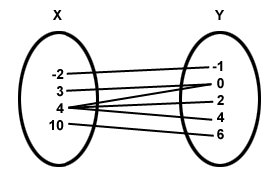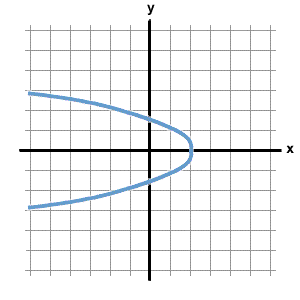Please wait while we process your payment
If you don't see it, please check your spam folder. Sometimes it can end up there.
If you don't see it, please check your spam folder. Sometimes it can end up there.
Please wait while we process your payment

By signing up you agree to our terms and privacy policy.
Don’t have an account? Subscribe now
Create Your Account
Sign up for your FREE 7-day trial
By signing up you agree to our terms and privacy policy.
Already have an account? Log in
Your Email
Choose Your Plan
Individual
Group Discount
Save over 50% with a SparkNotes PLUS Annual Plan!
 payment page
payment page
Purchasing SparkNotes PLUS for a group?
Get Annual Plans at a discount when you buy 2 or more!
Price
$24.99 $18.74 /subscription + tax
Subtotal $37.48 + tax
Save 25% on 2-49 accounts
Save 30% on 50-99 accounts
Want 100 or more? Contact us for a customized plan.
 payment page
payment page
Your Plan
Payment Details
Payment Summary
SparkNotes Plus
You'll be billed after your free trial ends.
7-Day Free Trial
Not Applicable
Renews July 10, 2025 July 3, 2025
Discounts (applied to next billing)
DUE NOW
US $0.00
SNPLUSROCKS20 | 20% Discount
This is not a valid promo code.
Discount Code (one code per order)
SparkNotes PLUS Annual Plan - Group Discount
Qty: 00
SparkNotes Plus subscription is $4.99/month or $24.99/year as selected above. The free trial period is the first 7 days of your subscription. TO CANCEL YOUR SUBSCRIPTION AND AVOID BEING CHARGED, YOU MUST CANCEL BEFORE THE END OF THE FREE TRIAL PERIOD. You may cancel your subscription on your Subscription and Billing page or contact Customer Support at custserv@bn.com. Your subscription will continue automatically once the free trial period is over. Free trial is available to new customers only.
Choose Your Plan
This site is protected by reCAPTCHA and the Google Privacy Policy and Terms of Service apply.
For the next 7 days, you'll have access to awesome PLUS stuff like AP English test prep, No Fear Shakespeare translations and audio, a note-taking tool, personalized dashboard, & much more!
You’ve successfully purchased a group discount. Your group members can use the joining link below to redeem their group membership. You'll also receive an email with the link.
Members will be prompted to log in or create an account to redeem their group membership.
Thanks for creating a SparkNotes account! Continue to start your free trial.
We're sorry, we could not create your account. SparkNotes PLUS is not available in your country. See what countries we’re in.
There was an error creating your account. Please check your payment details and try again.
Please wait while we process your payment

Your PLUS subscription has expired
Please wait while we process your payment
Please wait while we process your payment

Domain
The domain of a relation (or of a function) is the set of all inputs
of that relation. For example, the domain of the relation
(0, 1),(1, 2),(1, 3),(4, 6) is x=0, 1, 4.
The domain of the following mapping diagram is
-2, 3, 4, 10:

Mapping Diagram
The domain of the following graph is :

Graph
Most of the functions we have studied in Algebra I are defined
for all real numbers. This domain is denoted . For example, the domain of f (x) = 2x + 5 is , because
f (x) is defined for all real numbers x; that is, we can find f (x) for all
real numbers x. The domain of f (x) =  x2 - 6 is also , because f (x) is defined for all real numbers x.
x2 - 6 is also , because f (x) is defined for all real numbers x.
Some functions, however, are not defined for all the real numbers, and thus are
evaluated over a restricted domain. For example, the domain of f (x) =  is , because we cannot take the square root of a
negative number. The domain of f (x) =
is , because we cannot take the square root of a
negative number. The domain of f (x) =  is . The
domain of f (x) =
is . The
domain of f (x) =  is , because we cannot divide by zero.
is , because we cannot divide by zero.
In general, there are two types of restrictions on domain: restrictions of an
infinite set of numbers, and restrictions of a few points. Square root signs
restrict an infinite set of numbers, because an infinite set of numbers make the
value under the  sign negative. To find the domain of a function with
a square root sign, set the expression under the sign greater than or equal to
zero, and solve for x. For example, find the domain of f (x) =
sign negative. To find the domain of a function with
a square root sign, set the expression under the sign greater than or equal to
zero, and solve for x. For example, find the domain of f (x) =  - 11:
- 11:
| 2x + 4 | ≥ | 0 | |
| 2x | ≥ | -4 | |
| x | ≥ | -2 |
 - 11 is .
- 11 is .
Rational expressions, on the other
hand, restrict only a few points, namely those which make the denominator equal
to zero. To find the domain of a function with a rational expression, set the
denominator of the expression not equal to zero and solve for x using the zero
product property. For example, find the domain of f (x) =  :
:
| (x - 9)(2x + 8)(x + 2) | ≠ | 0 | |
| x | ≠ | 9, - 4, - 2 |
 is .
is .
Please wait while we process your payment

